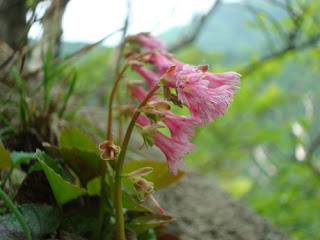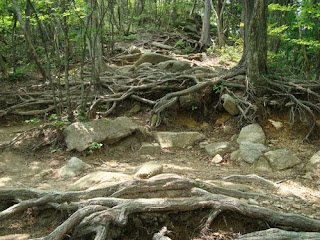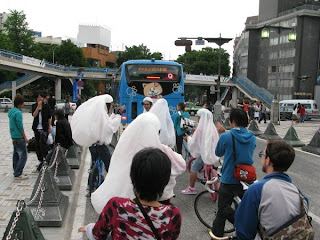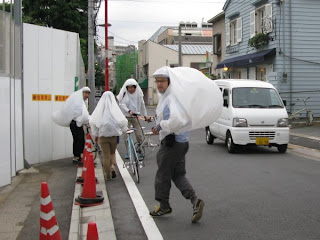Taking a trip to Tokyo either for leisure or business can be an expensive proposition. Japan is one of the more expensive countries in the world.
Because of this, many visitors are looking to get a good deal on their Tokyo hotel. Fortunately, with of the influx of tourists and business travelers to Tokyo, there is now a proliferation of different types of hotels that cater to different budgets. This ranges from business hotels (western style hotels that are located near the center of Tokyo) to Kanshuku, which are similar to hostels in that most facilities are shared with other travelers and rooms are simply furnished with tatami mats.
If you are on the lookout for good budget hotels in Tokyo, consider checking out one of these seven hotels.
Keio Plaza Inter-Continental TokyoLocated at the heart of the city, the Keio Plaza Inter-Continental Tokyo is known for its perfect melding of the east and the west. It has a hospitable staff and tasteful decorations that consist of beautiful chandeliers and ikebana flower arrangements. Even though it is a part of the luxury Inter-Continental chain of hotels, the Keio Plaza still holds some of the more affordable rooms in the city. Additionally, it has many features that business travelers will surely welcome like high speed internet and a business center. Tourists, on the other hand, will appreciate the interesting restaurants, bars, and luxury services that the hotel offers.
Ana Hotel Tokyo The Ana Hotel Tokyo is conveniently located just a few minutes away from such popular places as Tameike-sanno, Roppongi-itchome, Kamiyacho and Akasaka Stations. Also, it is close to government offices, Akasaka and the Roponggi entertainment establishments, making it great location for both business and pleasure. The Ana Hotel Tokyo has nice amenities that is atypical of a budget hotel. The rooms all have air conditioning, satellite TV, and mini bar. There is also an in-house restaurant and bar. Conference rooms are available for business functions and there is also a swimming pool, sauna and spa.
Hotel New Otani TokyoThe Hotel New Otani Tokyo is tucked away in a quiet section of the city away from the busy city center. It is located in the middle of a 10 acre Japanese garden that dates back to the 16th century. The hotel primarily caters to business travelers, offering world class amenities and services. Businessmen will be delighted to know that there are modern office services and equipment for their use. This includes 24 banquet rooms as well as meeting and conference rooms. The hotel has been the site of many large conventions and business functions.
New Hankyu Hotel TokyoIn terms of convenience, the New Hankyu Hotel Tokyo is one of the most accessible hotels in Tokyo. It is a short five minute walk away from Tsukiji Station, which makes it a very strategically placed hotel if you are planning on making frequent trips through the subway.
The hotel itself is located on the 33rd through the 38th floors of a distinctive commercial building that has a great view of the city, particularly landmarks like the Tokyo Tower, Sumida River and Tokyo Bay. Amenities are very respectable as the hotel offers great cuisine and beautifully designed rooms. The staff is very attentive to guests. The hotel itself is marketed towards business travelers, and as such all rooms have a massage sofa as well as a fax line. Guests can also request for a fax machine.
Sunshine City Prince Hotel TokyoThe Sunshine City Prince Hotel is located just eight minutes away from the Ikebukuro Station. The hotel itself is located amidst the hustle and bustle of the Ikebukuro district, which features a number of great attractions like the International Aquarium, Alpa Shopping Center, World Imports Mart, and the Culture Hall, among others. The hotel features 1,166 rooms in a 38 story building.
New KoyoOne of the most affordable hotels in Tokyo is New Koyo. The hotel has earned a reputation for having the some of the most budget friendly prices in the city. For just $21 for a single room and double rooms at $44, you can see why it's considered a budget traveler’s favorite. All of the rooms feature a TV set and there is internet access in the lobby. The hotel even rents out bicycles for 500 yen a day. Also, The New Koyo has been favorably reviewed. Because of the unbelievably low price, expect to have difficulty booking rooms or making reservations.
Sakura HotelThe Sakura Hotel is another budget friendly hotel that budget travelers will surely add to their list of affordable hotels in Tokyo. The Sakura hotel offers hotel rooms at very low rates (although not as low as New Koyo’s). A single room only costs $55. The hotel offers different room types that include double, twin and dorm style rooms (which are available with bunk beds). The dorm style rooms are actually just $35 per person. Consider getting this rate if you travel as a group - whether as tourists or as a business team.
The rooms in the Sakura are all equipped with basic amenities such as air conditioning. The hotel also offers other amenities and services like a laundromat, a café that’s open 24 hours, and an internet café. Reservations at the Sakura can be done online for added convenience.
This is a guest post by Dee Barizo. He does marketing for Japanican, a travel website specializing in
Japan hotels.
Book your Japan hotel today at Japanican.com.




















